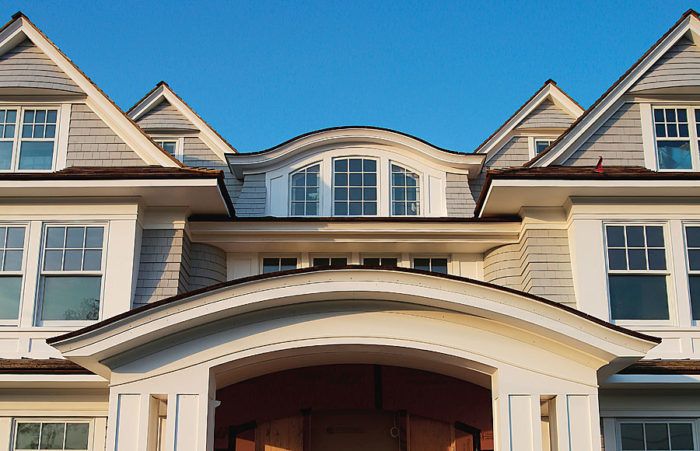Custom Curves with PVC Trim
Save time and money by bending PVC trim with a site-made oven.

Synopsis: Needing to bend pieces of exterior PVC trim on a custom house, and working under a tight schedule, builder Joe Filanowski Jr. and his business partner devised an oven with a few simple materials and a torpedo heater. The oven worked so well that they have used it ever since. Here, he discusses the design of the oven and how to build and use a form for shaping the heated trim.
My business partner, John Costantini, and I have been building custom homes for over 25 years, and timing has always been essential when it comes to coordinating our numerous subcontractors. about eight years ago, we were working on a job that called for exterior PVC trim with significant bends around a turret. Manufacturers can bend trim by warming it in a PVC thermo-forming oven, but that would have required at least four to six weeks lead time, and we were on a tight schedule. Custom bending is also expensive; it would have cost $2200 for the 20 ft. of trim we needed to be shaped. There are special thermo-forming blankets for trim that allow you to do the bending work on site, but they cost over a thousand dollars—a difficult expense to justify unless you plan to use the blanket regularly. Another downside is that the largest blanket sold is only 10 ft. long and 5 in. wide. While renting might be an option, availability is limited, and rental costs are high. We devised our own technique for bending trim in order to meet our deadline, and it worked so well that now it’s our go-to method.
Improv oven
Our oven is simply a Master torpedo heater (155,000 Btu) aimed into lengths of 14-in.-dia. metal HVAC duct propped up on concrete blocks. Scrap stone or brick can be used to keep the duct from rolling. Inside the duct, lengths of fiber-cement siding are suspended by 24-in. wire batt supports running through the diameter at regular intervals. A piece of plywood at the opposite end of the duct confines the heat
An advantage of templating and bending on-site is that the contour is taken directly from where it will be installed, and if there is any unforeseen error, you can simply modify it and try again without the added time and expense such a mistake would cost by going through a manufacturer.
For more photos and details, click the View PDF button below:





